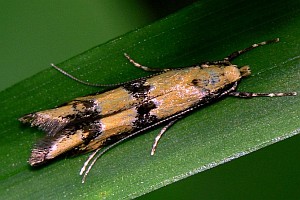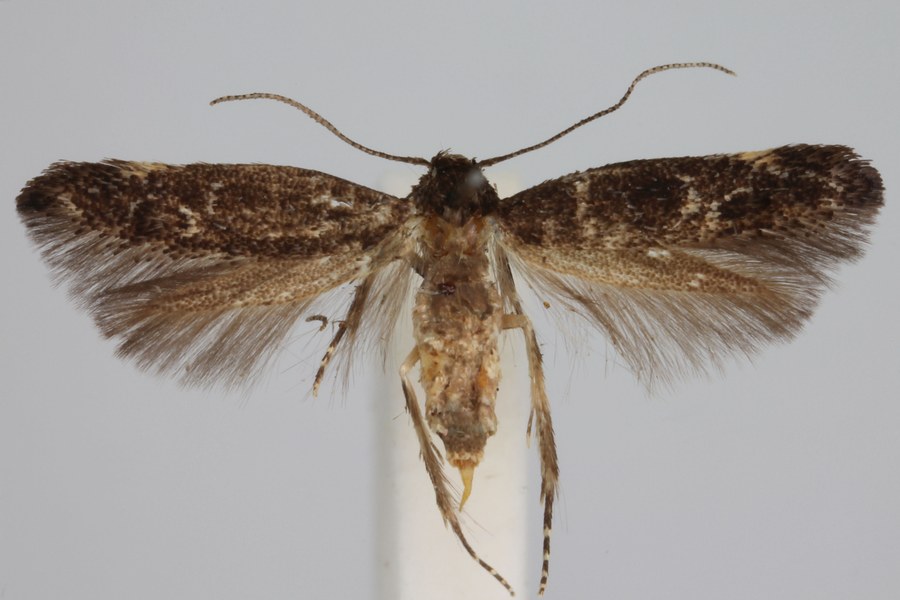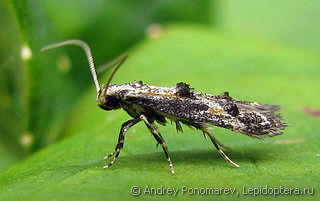Blastodacna vinolentella
Blastodacna vinolentella is a butterfly (moth ) from the family of the grass leaf miner ( Elchistidae ).
- 5.1 Notes and references
Features
The moths reach a wingspan 9-12 mm. The head shining dark brown. The sensor also shining dark brown and curled more dark gray and indistinct in the distal half. Thorax and tegulae shining dark brown. The forewing shining dark brown. An indistinct gray-white, light brown -mixed Costalfleck is in the last quarter of the Costa loader. Two large shed tufts are located at the inner edge of wing. The first is in the first third, the second in the second third. The latter is larger and inside edged with gray -white scales. A gray- white indistinct curved binding runs between the shed tufts. A similar binding runs Subapikalbereich from Costalfleck to the wing inner edge. The fringe scales are gray-brown at the apex dark brown and towards the base. You have an indistinct transverse line. The hindwing shining brownish gray.
In the males, the Gnathos arms are very short, the ends have spherical and with six or seven rows of prongs. The Tegumen is short and distally tapering strong. The Valven are about twice as long as the Tegumen, slim and very wide at the base. The tip is rounded and dilated. The Annellus lobes are fused in the first half, the second half forms a blunt tip. They are bent inward, on the inside there is a strong Dorsalfalte. The aedeagus is long and in the distal half slender and curved. The vesica has a sting spot.
In females, the genital plate is reduced to a small shallow V -shaped sclerotization. The antrum is tubular and narrows towards the ostium. The ductus bursae has a round before the antrum sclerotized plate. The corpus bursae is ovate, the Signum is slightly granulated.
Similar Species
Can be distinguished from the other species of the genus vinolentella Blastodacna based on the relatively broad blackish-brown forewings with a few whitish scales. An exception is Blastodacna Georgian ella; this species has a gray frons and on the fore wings bordered a small white spot inside the shed tufts.
Dissemination
The species is represented in Central and Southern Europe, the range extends from Holland to Greece.
Biology
Little is known about the biology of the species. Although the grapevine (Vitis vinifera ) is mentioned in the literature, so there is nothing to show that the caterpillars have been grown on this plant. Rather, it is assumed that the first description Diakonoff Herrich - Schaffer followed the mentioned 1854 "will take place on vines in July ". In various evidence of caterpillars on the buds of apple trees (Malus ) and young shoots of the interventions leagues hawthorn (Crataegus monogyna ) is apparently to avoid confusion with the melanistic form of Blastodacna atra. The moths fly from early June to early August.
System
From the literature, the following synonyms are known:
- Tebenna vinolentella Herrich -Schäffer,






